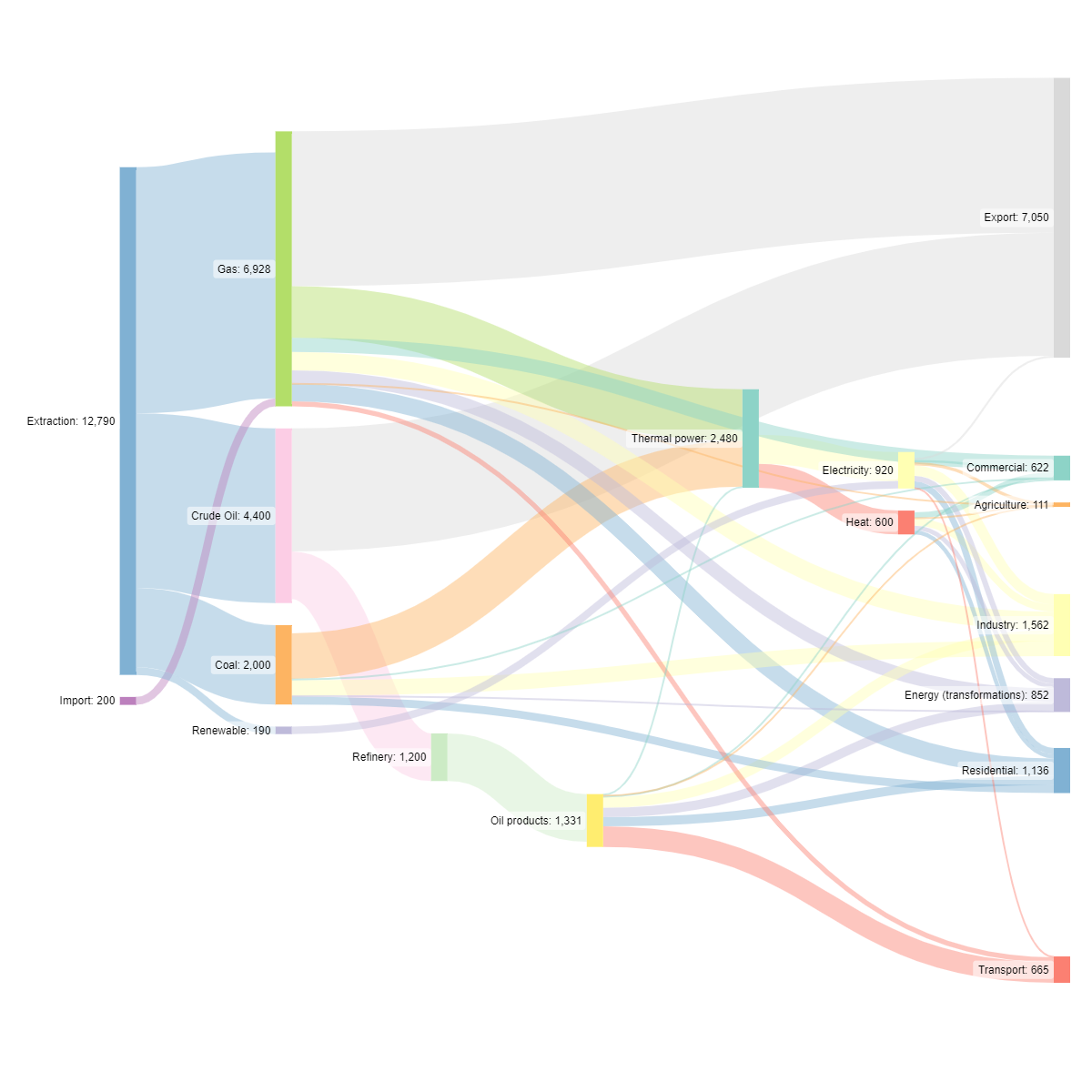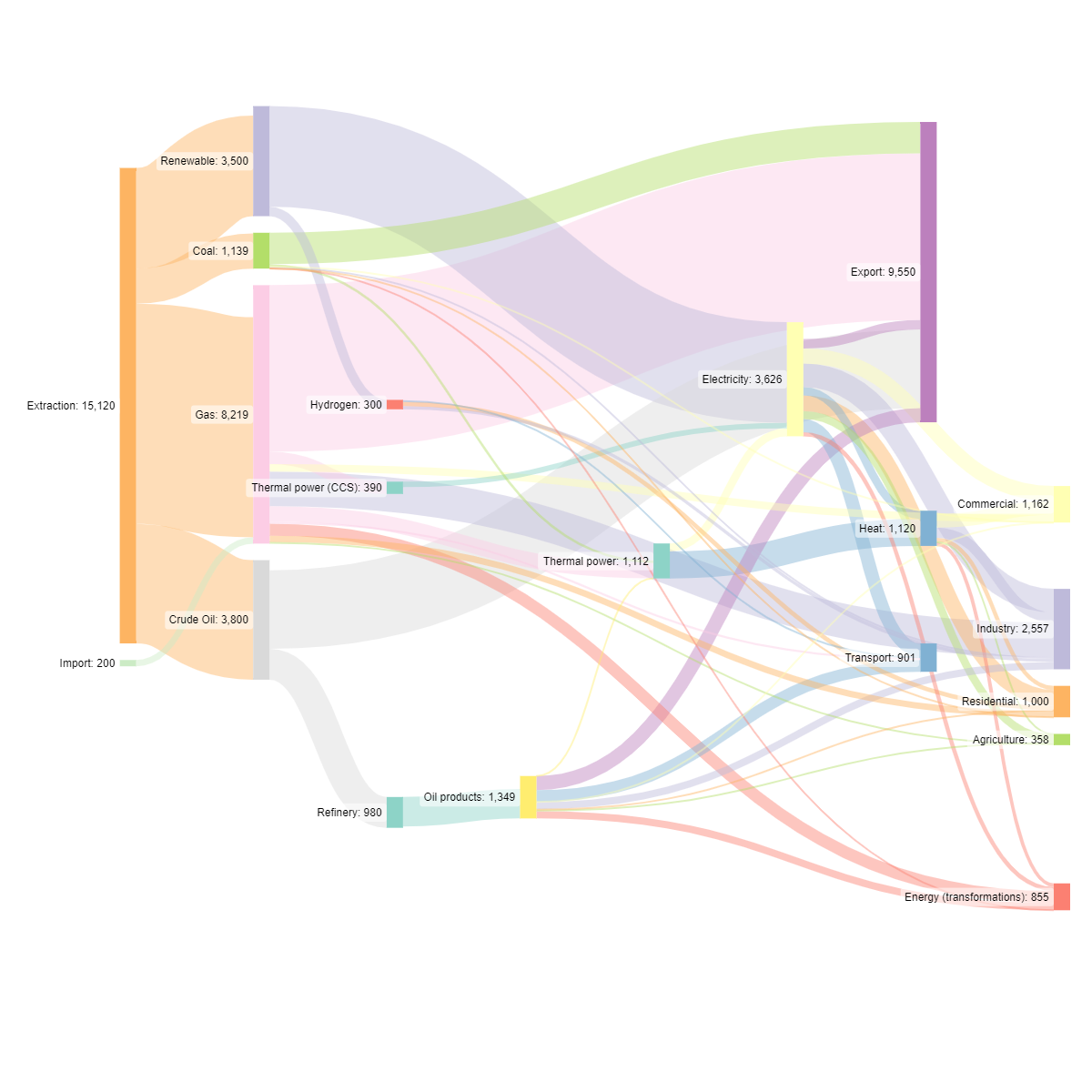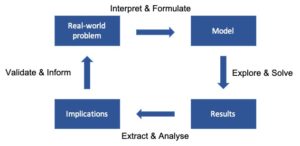Additional information
EU Energy Modelling
Energy modelling in the EU Member States is based on EU Reference Scenario 2020, one of the Commission’s key projection and analysis tools for energy, transport and climate action. More: https://energy.ec.europa.eu/data-and-analysis/energy-modelling_en.
European Climate and Energy Modelling Forum (ECEMF)
ECEMF is a Horizon 2020 funded project whose aim is to establish a European forum for energy and climate researchers and policy makers to achieve climate neutrality.
National Energy and Climate Plans (EU Member States)
EU countries’ 10-year national energy and climate plans for 2021-2030. More:
https://secca.eu/knowledge-hub/eu-policies-and-regulations/necp/
Eurostat – Sankey diagrams for energy balance (historical years)
Sankey diagrams are (energy) flow diagrams, in which the width of the arrows is proportional to the flow rates. https://ec.europa.eu/eurostat/cache/sankey/energy/sankey.html?geos=EU27_2020&year=2021&unit=KTOE&fuels=TOTAL&highlight=_&nodeDisagg=0101000000000&flowDisagg=false&translateX=0&translateY=0&scale=1&language=EN
Climate Action Tracker (CAT)
The Climate Action Tracker is an independent scientific project that tracks government climate action and measures it against the globally agreed Paris Agreement aim of “holding warming well below 2°C, and pursuing efforts to limit warming to 1.5°C.” A collaboration of two organisations, Climate Analytics and NewClimate Institute, the CAT has been providing this independent analysis to policymakers since 2009.
https://climateactiontracker.org/
Among the Central Asian countries, the information is available so far only on Kazakhstan:
https://climateactiontracker.org/countries/kazakhstan/
Open Models
This page lists energy models published under open source licenses.
https://wiki.openmod-initiative.org/wiki/Open_Models
Analyses made in Central Asia
Some examples of model-based analyses in the Central Asian region (to give a sense of what can be investigated: emissions mitigation pathways, the role of hydrogen, cooperative energy strategies, energy efficiency improvements paths):
- Rocco De Miglio, Aidyn Bakdolotov (2024), A “risk-induced” emission mitigation pathway for Kazakhstan. DOI: https://doi.org/10.1016/j.esr.2024.101332
- Xi Yang, Rocco De Miglio, Gabriele Cassetti (2021), Greening China’s BRI in Central Asian Countries: The Role of Hydrogen Towards Net-Zero Future, One Earth. DOI: http://dx.doi.org/10.2139/ssrn.3858058
- Bakdolotov, R. De Miglio, Y. Akhmetbekov, K. Baigarin (2017). Techno-economic modelling to strategize energy exports in the Central Asian Caspian region. Heliyon, Vol3 Issue4. DOI: https://doi.org/10.1016/j.heliyon.2017.e00283
- Aiymgul Kerimray, Rocco De Miglio, GianCarlo Tosato (2015). Improving Efficiency in Kazakhstan’s Energy System. Informing Energy and Climate Policies Using Energy Systems Models, Springer International Publishing (DOI 10.1007/978-3-319-16540-0)
- Rocco De Miglio, Yerbol Akhmetbekov, Kanat Baigarin, Aidyn Bakdolotov, GianCarlo Tosato (2014). Cooperation benefits of Caspian countries in their energy sector development. Energy Strategy Reviews. DOI: https://doi.org/10.1016/j.esr.2014.09.002
- Yerbol Sarbassov, Aiymgul Kerimray, Diyar Tokmurzin, Rocco De Miglio, GianCarlo Tosato (2013). Electricity and heating system in Kazakhstan: exploring energy efficiency improvement paths. Energy Policy. DOI: https://doi.org/10.1016/j.enpol.2013.03.012.



 In general, models help capturing and interpreting the complexity of the real world in an understandable form, help analysing and organising large amount of data and information in a structured manner, and help exploring different hypotheses under the same (consistent) framework.
In general, models help capturing and interpreting the complexity of the real world in an understandable form, help analysing and organising large amount of data and information in a structured manner, and help exploring different hypotheses under the same (consistent) framework.